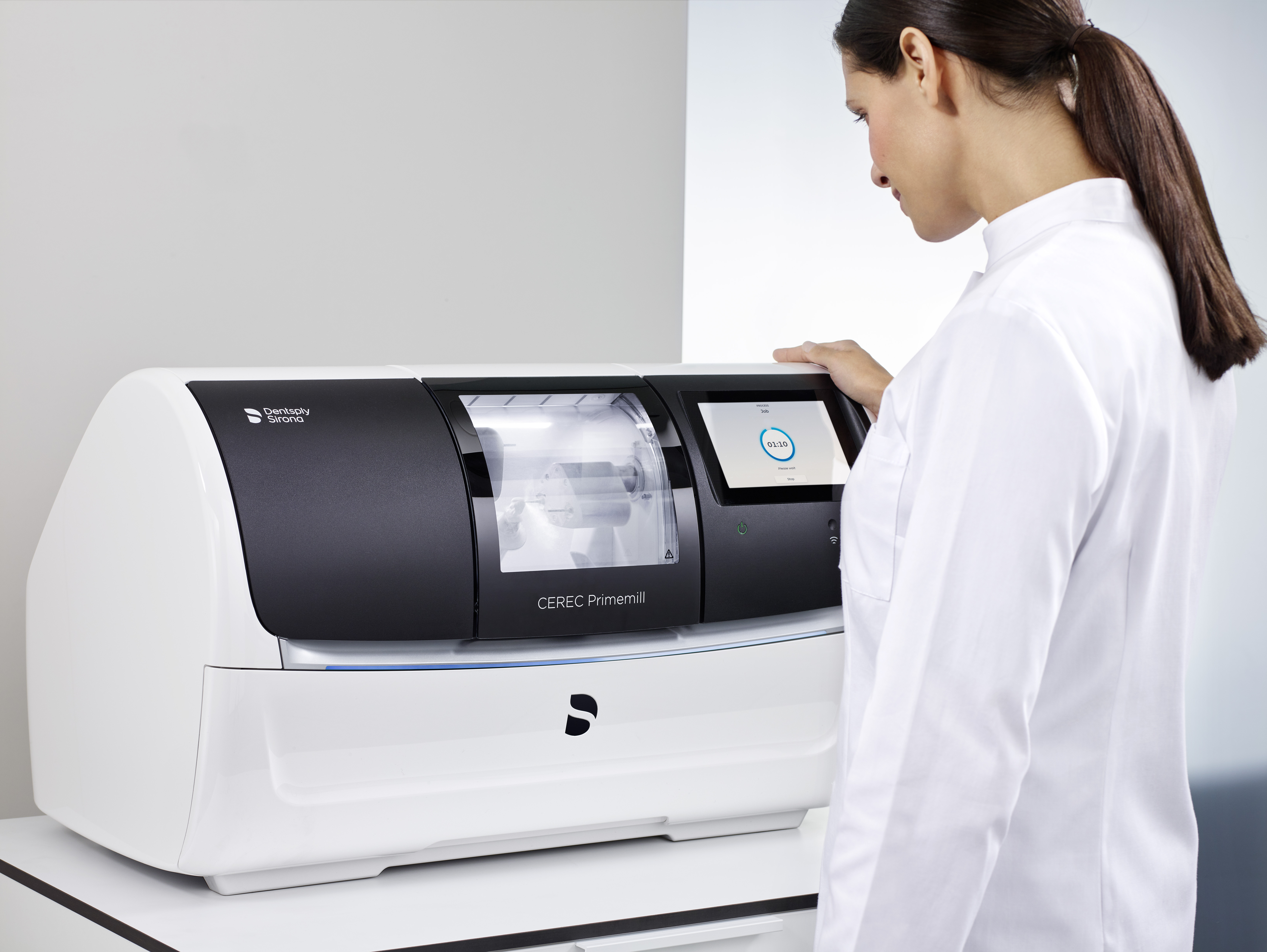Use promo code Q1ESS25 at checkout. Terms Apply*
In addressing the widespread challenge of bruxism, dental professionals often turn to dental splints as valuable tools. These devices are crafted not only to combat bruxism but also to tackle various dental complexities.
Managing bruxism involves a combination of stress reduction, pharmacological interventions, and the use of precisely crafted oral appliances. This approach aims to achieve neuromuscular equilibrium and counteract parafunctional forces, contributing to overall patient well-being.
In the dental field, splints play a crucial role, serving as practical allies rather than mere appliances. Their applications range from preventing bruxism to safeguarding teeth during contact sports, making them indispensable in modern dental practices.
As the demand for sophisticated solutions grows, dental professionals are increasingly seeking nuanced approaches that go beyond traditional tools. The focus is on practical and effective strategies to meet the evolving needs of patients and redefine the standards of excellence in the field.

The Splint Spectrum: A Diverse Range of Solutions
The world of dental splints is experiencing a remarkable surge in demand. According to industry reports, splint demand is increasing at an annual rate of 5.5% globally, signifying a growing need for effective and efficient splint solutions. Bruxism can lead to severe dental complications, making it the perfect starting point for understanding the importance of splints in dental care. Solutions like the Michigan Splint and Night Guard that have long been stalwarts in the fight against Bruxism to prevent teeth from grinding against each other. However, the world of splints is vast, and innovation knows no bounds. As demands increase, the need for diverse and efficient solutions has become paramount.
Permissive Splints: Permissive splints are designed to provide freedom of movement to the temporomandibular joint (TMJ) and the associated muscles. These splints allow natural jaw movements without imposing restrictions. They are often used to alleviate pain and discomfort caused by TMJ disorders, allowing the joint to function without hindrance.
Directive Splints (Non-Permissive Splints): Directive splints, on the other hand, guide or direct the movement of the jaw into a specific position. These splints are customized to correct abnormal bite patterns or misalignments. By guiding the jaw into a predetermined position, directive splints aim to adjust the bite and alleviate symptoms related to malocclusion, bruxism.
Some of the most prescribed dental splints have a vast array of demand within dental offices, including the stabilization splint, sublingual splint, retainers, emergency splint, surgical splint, occlusal equilibration unit, sports guard, whitening trays, and the following, which are high demand splints:
Anterior bite guard (permissive splint)
- Composition: Crafted from firm material for effectiveness.
- Purpose: Offered for short-term treatment or as a trial splint to assess therapy benefits.
- Design: Partial/full coverage, leaving posterior teeth exposed or out of contact.
- Functionality: Optimized design inhibits jaw clenching by preventing posterior teeth contact, thereby reducing activation of jaw muscles.
Bruxism splint/Occlusal splint (permissive/non-permissive splints)
- Placement Options: Can be fitted on either maxillary or mandibular arch.
- Design: Flat design ensures even contact between opposing teeth.
- Target Audience: Specifically designed for individuals with bruxing habits
- Purpose: Occlusal splints alter natural intercuspation, prompting patients to align their jaws with equal stops on all teeth. This alignment facilitates the correct seating of the condyle in centric relation, establishing a new balance in both muscles and joints. By separating the teeth and diminishing direct cuspal impact, these splints interrupt the usual intercuspal position (ICP) pathway. Consequently, patients' habits are disrupted, curbing teeth clenching and ensuring the protection of their temporomandibular joint (TMJ), teeth, and associated structures.
- Functionality: Guards against harmful effects stemming from bruxism and temporomandibular disorders (TMDs).
Dental splinting for loose teeth
- Design: Physically links teeth or crowns for stabilization. Fixed splint.
- Functionality: Stabilizes loose teeth due to lost gum/bone support.
- Placement Options: Primarily performed on front teeth for enhanced stability.
The Diversity of Splint Materials: Not All Splints Are the Same
The choice of splint material significantly influences the effectiveness and comfort of a device. Not to mention that the intention of the device determines the “best use” for material selection. With Primeprint's innovative materials and high degree of automation, dental professionals have access to a spectrum of options tailored to specific patient needs.
Primeprint: An Extension of Splint Materials
Primeprint offers a range of splint materials, each catering to different flexibility, hardness, and transparency requirements. The introduction of a flexible splint solution within this range, marked by a thinner wall thickness, represents a significant leap forward in esthetics. The innovative materials not only enhance patient comfort but also offer dental professionals a streamlined workflow.
- Primeprint Splint ST: This material combines medium flexibility with medium hardness, making it suitable for a wide range of splint applications, including repositioners, mouth guards, and nightguards.
- Primeprint Splint SF: With high flexibility and low hardness, Primeprint Splint SF is ideal for patients needing more flexibility in their splints. It ensures a comfortable fit while providing necessary support, making it suitable for repositions, mouth guards, and nightguards. Ideal choice for sensitive patients needing higher flexibility.
- Primeprint Splint: This material boasts high hardness, making it perfect for applications where rigidity is crucial. It offers stability and durability, ensuring long-lasting results.
Advanced flexible splint solutions allow DS to redefine dental procedures: Introducing Primeprint™: a Dental 3D Printing Solution Powered by DS Core - YouTube
All resin options integrate seamlessly into the DS intelligent material management system, ensuring a consistent process. However, Primeprint Splint SF and ST enable progressive improvements.
- Streamlined Manufacturing: Reduced manual work, minimal polishing, and effortless support structure removal enhance efficiency, saving valuable time in your workflow.
- Enhanced Aesthetics: Thinner wall thickness ensures superior esthetics, providing clear and comfortable solutions for your patients.
- Patient-Centric Design: Tasteless and comfortable, these splints are designed for various treatments, including splints, repositioners, mouth guards and night guards.
- Material Variety: Choose from three distinct splint materials, each tailored to your specific needs. Primeprint Splint ST and SF are additionally MMA-, THF-MA- and TPO-free.

Primeprint: Streamlined Workflow
The process of in-house manufacturing with Primeprint follows a structured and efficient workflow:
- Scan: Utilize advanced scanning technology, such as Primescan, to capture precise intraoral impressions of the patient's teeth.
- Design: Leverage innovative software to create detailed designs of the splints based on the scanned digital impressions or outsource the design work to experienced lab technicians from DS Core Create Design Service
- Prepare Print File: Use inLab CAM Software to prepare the print file, ensuring all design elements are optimized for 3D printing and post-processing. If the designs were ordered via DS Core Create design service, production can be started immediately with the ready-to-print file.
- Print and use Automated Post-Processing: Employ Primeprint and Primeprint PPU for 3D printing. The automated post-processing capabilities of Primeprint PPU reduce manual labor connected to washing and curing.
- Manual Finishing: Perform any necessary manual finishing touches to refine the splints, ensuring they meet the highest quality standards. With the usage of Material Unit Type S for printing of Primeprint Splint ST and SF the manual labor for the finishing steps is reduced.

The innovative material handling concept including Material Unit and Primeprint Box enables clean and secure handling, eliminating direct contact to the uncured resin.It offers essential UV light protection for unparalleled safety and precision in dental procedures.
* Primeprint Box: The secure and clean transport system is central to the hardware process, ensuring the building platform's safety within the enclosed yellow transport box, where a robot arm automatically handles the building platform within Primeprint and Primeprint PPU, avoiding skin contact, providing protection against breakage, dust, and UV light, all supported by RFID coding.
* Material Unit: Automated and secure material management eliminates manual pouring with supplied cartridges, identified and monitored through RFID tags and color coding for various indications. The material cartridge pairs efficiently with the system, enabling swift transitions between different materials.
DS Core Create: Access to High-Quality Designs
Dentsply Sirona takes the dental professional's journey a step further with DS Core Create Design Service that optimizes the splint workflow. Dental professionals can now delegate the design process to certified DS Core Create partner labs, ensuring high-quality service with a fast turnaround time.* This service can be seamlessly connected to existing scanning equipment and designs can be immediately printed in-house with Primeprint Solution, allowing dental professionals to focus on what truly matters: patient care. When time is scarce, complexities arise, or design feels overwhelming, dentists trust DS Core Create to simplify the process and deliver optimal solutions.
*DS Core Create Design Service is currently available in the US, New Zealand, Australia, and Germany
Benefits of DS Core Create: :
- Connectivity: DS Core Create seamlessly integrates with any scanner and Primeprint Solution, ensuring a smooth workflow from scanning to printing.
- Ready-to-Print Designs: The design file not only encompasses the splint design but also includes all essential print settings and parameters. Dental professionals can commence printing without delay.
- User-Friendly Interface: DS Core Create offers an intuitive and easy-to-understand user interface. Placing orders and managing the design process is efficient and straightforward.
- Fast Turnaround Time: Dental professionals receive the splint design file within six business hours, complete with all necessary information. The rapid turnaround time ensures timely patient care.
- Flexibility: Dental practitioners have the flexibility to choose whether to design in-house or outsource the design to DS Core Create Design Service. This adaptability ensures practices can optimize their workflow based on specific requirements.

DS Core
The platform where Dentsply Sirona's digital services and solutions meet
Conclusion: Empowering Dental Professionals for a Bright Future
Dental splints have transcended from being mere night guards to becoming intricate solutions that address a multitude of concerns. With innovations like Primeprint and DS Core Create, Dentsply Sirona aims to exceed expectations and deliver unparalleled dental solutions. Dental professionals are now equipped with precision tools and exceptional service, ensuring predictable clinical outcomes for their patients while making their practices more efficient and profitable.











